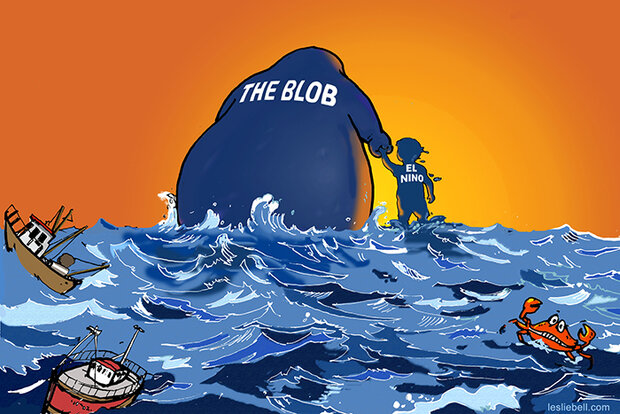Linking climate conditions to marine heatwaves

The Blob has severe ecological and economic consequences. Credit: Leslie Bell
The Northeast Pacific Ocean has experienced episodes of intense and persistent abnormally warm conditions, also known as marine heatwaves, that have devastating ecological and economic impacts. One notable marine heatwave, nicknamed The Blob, began in the Winter of 2013/2014. The Northeast Pacific experienced extreme sea surface temperatures (SSTs), first developing in the center of the Gulf of Alaska. These abnormally warm SSTs extended along the US West Coast. While the marine heatwave underwent substantial variation in its intensity and spatial pattern, the entire event lasted over 2 years, ending in mid-2016.This event caused ecological and economic disasters such as geographical shifts in marine species, massive die-offs of mammals and sea birds, unusual whale entanglements and mortality, and prolonged harmful algal blooms. Being able to predict these extreme events a few seasons in advance is very important, but has proven difficult.
Read more at the link below.